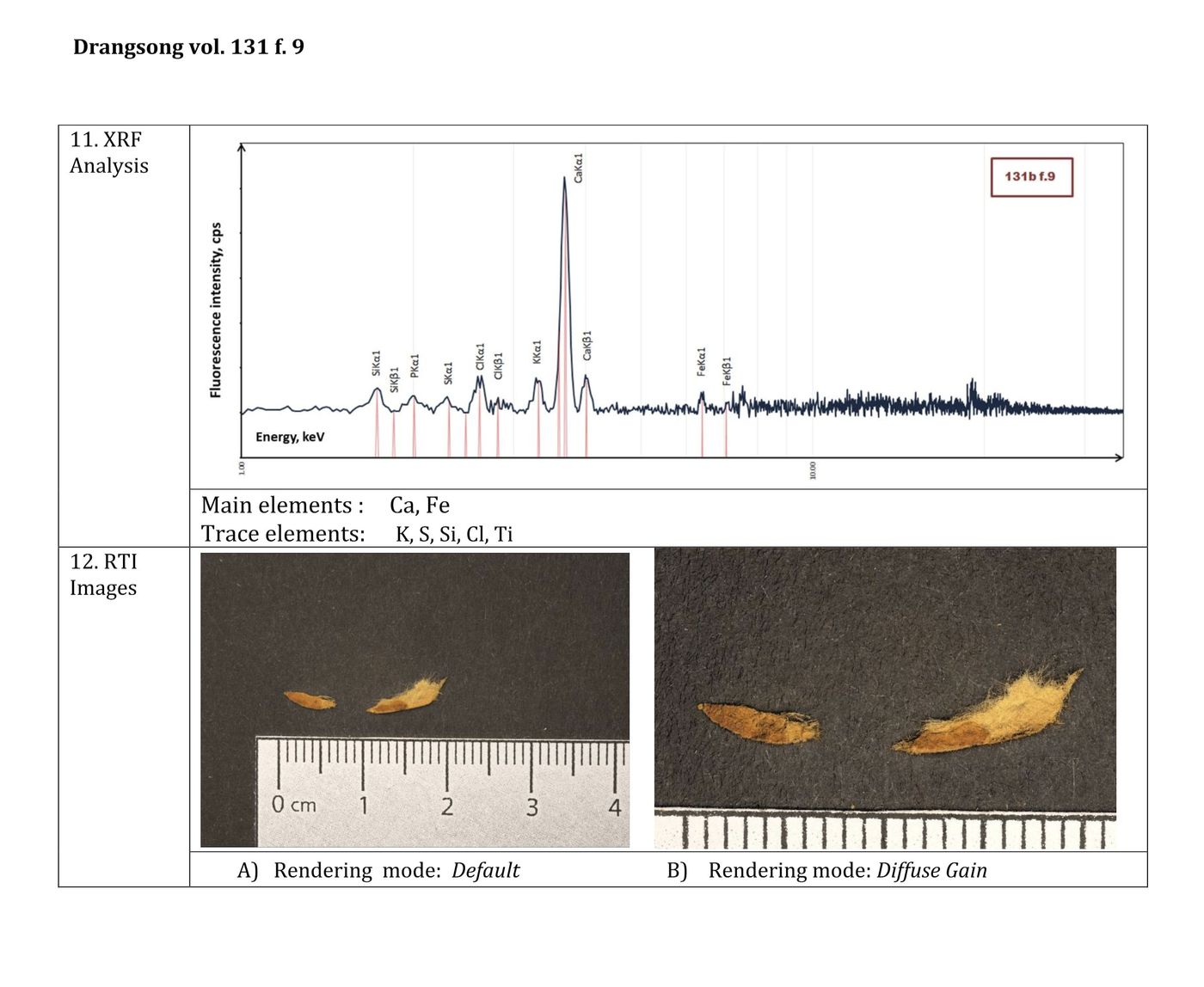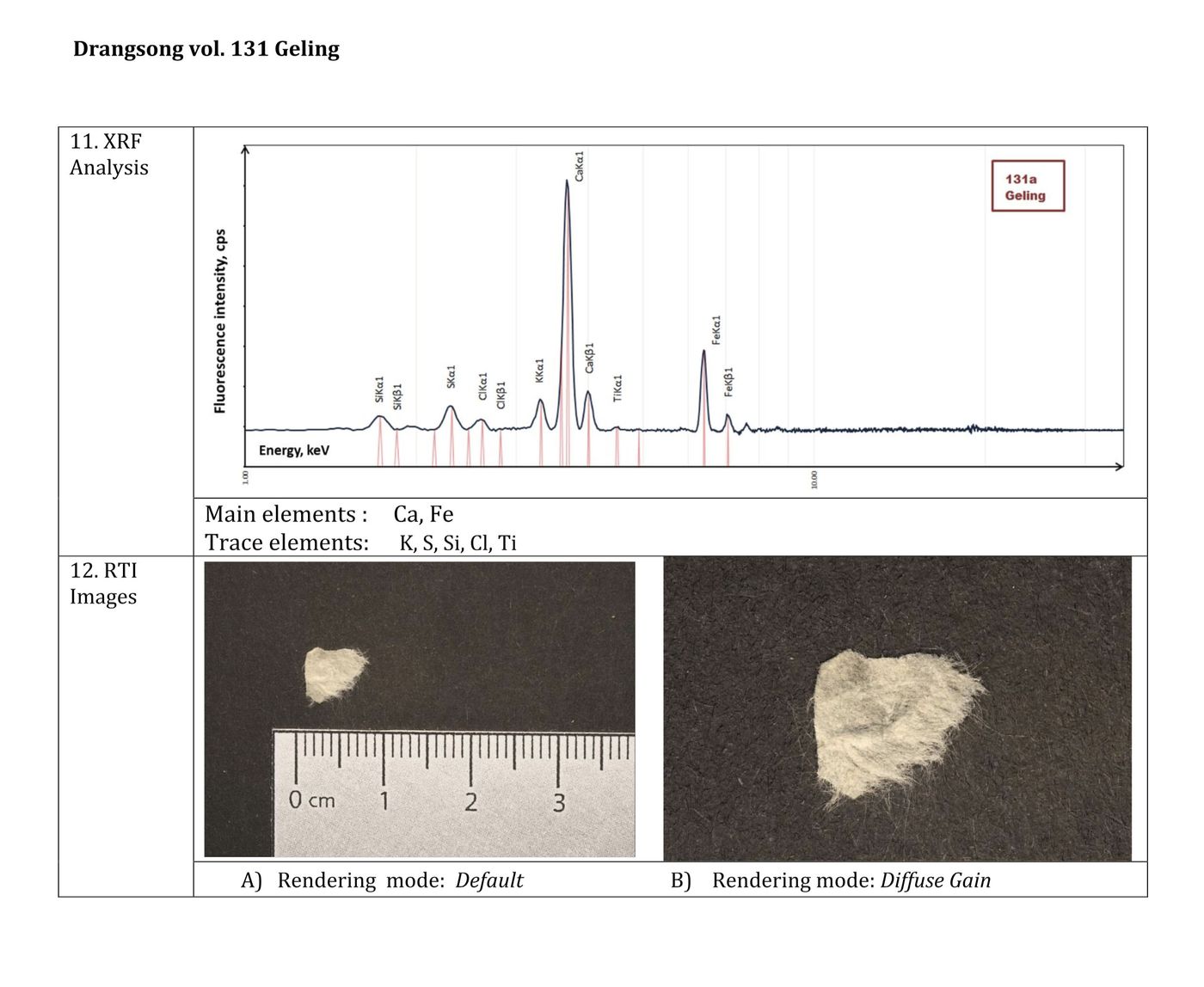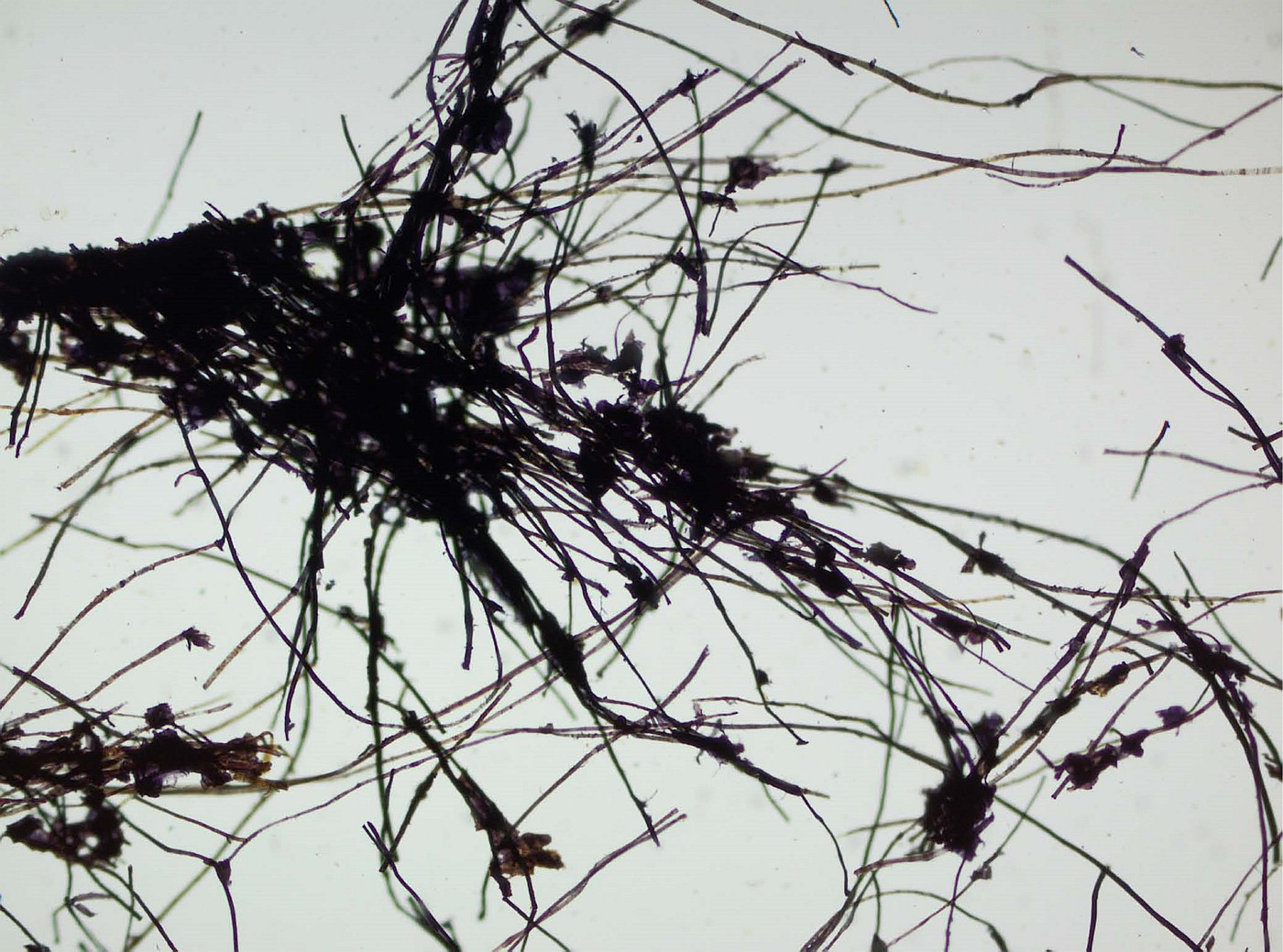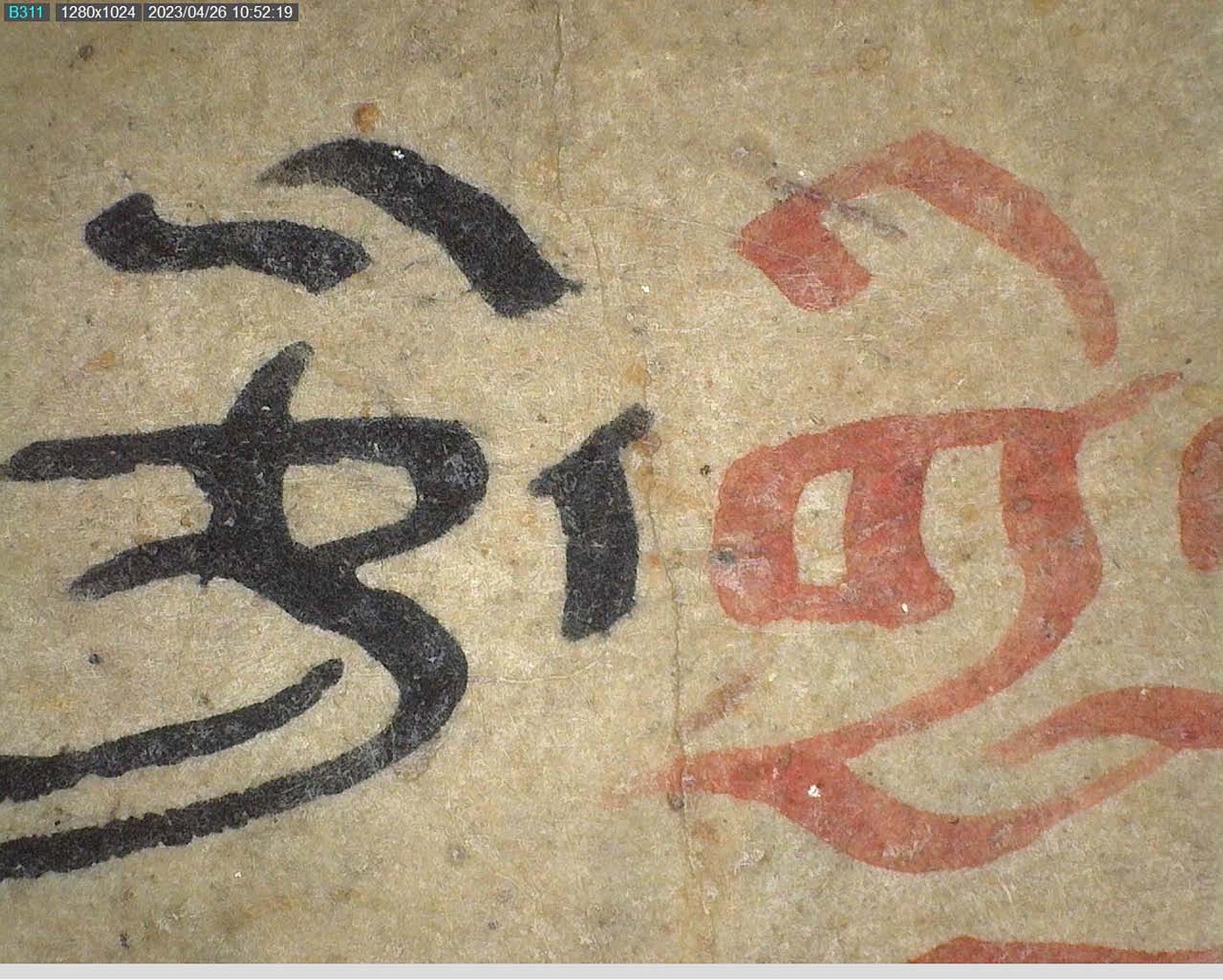DRANGSONG MANUSCRIPTS
|
1. Text number |
Drangsong 131 |
|
2. Text title (where present) in Tibetan |
༄༅།།ཚེ་རིངས[རིང]བཅུ་གསུམ་གྱི་ཤུགས་འགོན[མགོན]བཞུགསྷོ།། |
|
3. Text title (where present) in Wylie transliteration |
Tshe rings bcu gsum gyi shugs ’gon[mgon] bzhugs+ho/ |
|
4. A brief summary of the item’s contents |
Rituals relating to thirteen kinds of objects that symbolise longevity |
|
5. Number of folios |
9 |
|
6. Scribe’s name |
None |
|
7. Translation of title |
The shug mgon (protector) ritual of the thirteen objects representing longevity |
|
8. Transcription of colophon |
Phran mnyon[smyon] pa khro ming gi[gis] bris/ zhu bdag[dag]/ bkra shis shog/ |
|
9. Translation of colophon |
I, the madman named Khro bo, wrote this. Proofread. Blessings. |
|
10. General remarks |
The thirteen objects that symbolize longevity are: the earth, mountains, trees, sky, sun, moon, stars, white paper, cypress trees, ducks, doves, stone mountains, running water. |
|
11. Remarks on script |
dpe tshugs, ’khyug ma tshugs |
|
12. Format |
Loose leaves |
|
13. Size |
9 × 34.5 cm |
|
14. Layout |
|
|
15. Illustrations and decorations |
This folio containing both text and images complements the text of the Tshe ring bcu gsum gyi shugs mgon. It is meant to be displayed vertically and accommodates four columns of different width and height traced in red, with the pairs of red lines usually indicating the margins of the text serving here to delimit the top and bottom of the columns. Among the four columns, that extending on the right side of the folio through the entire space delimited by the margins and that extending on the left side of the folio down to its centre have the same width and content. They break up in a total of fourteen squares, each but the lowest square of the left column inscribed on top with a short phrase in dbu med script that informs about the material or colour of the thirteen signs of Shugs mgon described in the text (the left column read before the right one, and from the bottom up): rus sbal ser (the gold of the tortoise) rib shel (the crystal of Mt Meru) shing mu man (the sapphire of the trees) sprin mu tig baidurya (the vaidurya pearl of the clouds) nyi ma me shel (the fire-crystal of the sun) zla pa chu shel (the water-crystal of the moon) skar ma phra min (the gilded silver of the stars) ngur pa ser (the yellow [colour] of the goose) shug gu mu man dung (the sapphire [and?] conch of the shu gu birds?) pho rog so la (the charcoal [colour] of the ravens) brag ri chong (the agate of the rock face) g.yu’i chu ri (the turquoise of the waves) shug lo dngul byu ru (the silver and coral of the ancient ponds (brug lo)?) While these thirteen phrases were apparently inscribed so as to leave enough space for adding illustrations below them, only five were eventually complemented by drawings. The crystal of Mt Meru, the sapphire of the trees, the vaidurya pearl of the clouds, the agate of the rock face, and the turquoise of the waves were illustrated with a tiered mountain, a four-branched tree, Chinese-style clouds and rocks, and circular waves. The reasons why these phrases were complemented by drawings and not the others are unclear. In comparison with these columns, those occupying the bottom left part of the folio are approximately twice thinner. They break down in five squares each, with their top squares ending in triangles like banners. Among these ten squares, four contain short phrases and four contain images. The two top squares are drawn with what may be three streams joining the ocean or rain falling from three clouds and with a triple jewel. Below, the second and third squares of the column the most to the right are inscribed with the phrases nyin zla dkar bsuṃ bris (the images of the sun, the moon, and the star, the three) and sprin ’ja’ dal bsuṃ (the cloud, the rainbow, and the river, the three), respectively, while the two corresponding squares of the next column are drawn with images of these celestial bodies and natural phenomena. Nyi, zla, skar, sprin, ’jal, dal compose the first six of the nine intermediate g.yen, which may have to be represented as part of a structure for the ritual. Still below, the fourth and fifth squares of the column the most to the left are inscribed with the words rten and sha. The relation of these two columns with the text of the Tshe ring bcu gsum gyi shugs mgon is unclear. A very similar folio is appended to the manuscript Drangsong 336. |
|
16. Paper type |
Woven, 2 layers |
|
17. Paper thickness |
0.20–0.23 mm |
|
18. Nos of folio sampled |
f. 9 |
|
19. Fibre analysis |
Daphne sp. with admixtures of single cotton fibres |
|
20. AMS 14C dating |
|
|
21. XRF analysis |
Main elements: Ca, Fe Trace elements: K, S, Si, Cl, Ti |
|
22. RTI |
A) Rendering mode: Default B) Rendering mode: Diffuse Gain |
|
23. GCMS |





